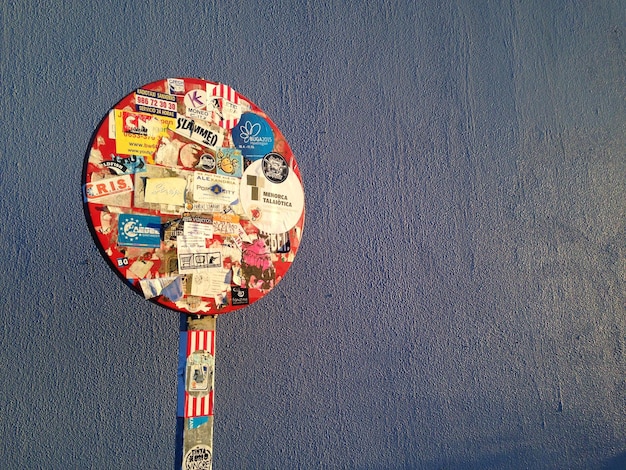Structuralism in Short Stories: Analyzing Narrative Techniques

Examining the Use of Structuralism in Analyzing the Narrative Techniques of Contemporary American Short Stories reveals how this theory dissects narrative elements to uncover underlying patterns and meanings, enhancing our understanding of modern literary works.
Dive into examining the use of structuralism in analyzing the narrative techniques of contemporary American short stories. This approach reveals the hidden architectures that shape our understanding and appreciation of modern literature.
Understanding Structuralism: A Foundation for Literary Analysis
Structuralism offers a unique lens through which to view literature. It’s not about individual interpretations but about the underlying structures that give meaning to narratives. This approach is particularly effective when analyzing the narrative techniques of contemporary American short stories.
By understanding structuralism, we can move beyond subjective readings. We delve into the system of signs and rules that govern the creation and interpretation of stories. Let’s explore how this framework can be applied to contemporary short fiction.
What is Structuralism?
Structuralism, at its core, seeks to uncover the underlying structures that organize and give meaning to cultural phenomena. Originating in linguistics, it was popularized by thinkers like Ferdinand de Saussure and Claude Lévi-Strauss.
In literary analysis, structuralism focuses on identifying patterns, codes, and conventions that shape narratives. It treats a text as a system of interconnected elements rather than a collection of isolated ideas.

Key Concepts in Structuralist Literary Analysis
Several key concepts are central to structuralist literary analysis. These concepts provide a framework for dissecting and understanding narratives.
- Binary Oppositions: Examining opposing concepts like good/evil, light/dark, or male/female to reveal underlying tensions.
- Mythemes: Identifying recurring narrative units or motifs that appear across different stories.
- Narrative Codes: Recognizing conventional narrative patterns and structures used by authors.
- Sign Systems: Analyzing how signs (words, symbols, images) create meaning within a text.
In essence, structuralism encourages us to look for the deep structures that give shape to literary works. This allows for a more objective understanding of narrative techniques.
In summary, structuralism provides a framework for analyzing the deep structures and patterns within literary texts, moving beyond individual interpretations. By identifying binary oppositions, mythemes, narrative codes, and sign systems, we can gain a more objective understanding of how narratives create meaning.
The Rise of Contemporary American Short Stories
Contemporary American short stories have evolved significantly over time. This evolution is reflected in the diverse range of themes, styles, and narrative techniques employed by modern authors. Understanding this context is essential for applying structuralist analysis.
Contemporary short stories often experiment with form and content. They challenge traditional narrative conventions and explore complex social and psychological themes. Let’s delve into the characteristics of this literary landscape.
Characteristics of Contemporary Short Stories
What sets contemporary American short stories apart? Several key characteristics define this genre.
- Fragmentation: Stories that lack a clear beginning, middle, and end, reflecting modern life’s disjointed experiences.
- Minimalism: A focus on concise language and subtle narrative details, often leaving much unsaid.
- Psychological Realism: An exploration of characters’ inner lives and subjective experiences.
- Social Commentary: Addressing contemporary social and political issues, often through allegorical or symbolic narratives.
Notable Authors and Their Impact
Several authors have significantly shaped the landscape of contemporary American short stories. Their diverse voices and innovative techniques have influenced the genre’s evolution.
Authors like Raymond Carver, Lydia Davis, and George Saunders have pushed the boundaries of the short story form. They experiment with language, structure, and character development.
- Raymond Carver: Known for his minimalist style and focus on the lives of working-class Americans.
- Lydia Davis: Celebrated for her experimental and fragmented narratives that challenge traditional storytelling.
- George Saunders: Acclaimed for his dark humor and satirical commentary on contemporary society.
These authors demonstrate the diverse range of styles and themes present in contemporary American short stories. Their works provide fertile ground for structuralist analysis.
In summary, contemporary American short stories are characterized by fragmentation, minimalism, psychological realism, and social commentary. Notable authors like Raymond Carver, Lydia Davis, and George Saunders have significantly influenced the genre’s evolution, offering diverse styles and themes that are ripe for structuralist analysis.

Applying Structuralism: Analyzing Narrative Techniques
Applying structuralism to contemporary American short stories involves dissecting narratives to reveal their underlying structures. This approach uncovers patterns and meanings that might otherwise be missed.
By examining elements like plot, character, setting, and symbolism, we can gain a deeper understanding of how these narratives function. Let’s explore how to apply structuralism in practice.
Deconstructing Plot Structures
Plot structures in contemporary short stories often deviate from traditional linear narratives. Structuralism helps us analyze these deviations and understand their significance.
Many contemporary stories employ fragmented or circular plot structures. These structures can reflect the chaos and complexity of modern life.
- Fragmented Plots: Analyzing how বিচ্ছিন্ন events contribute to the overall meaning of the story.
- Circular Plots: Examining how the narrative returns to its starting point, often with a changed perspective.
- Minimalist Plots: Identifying the key events and their impact on characters and themes.
Analyzing Character Archetypes
Character archetypes are recurring patterns of behavior and personality that appear across different stories. Structuralism helps us identify and analyze these archetypes.
Common character archetypes include the hero, the villain, the mentor, and the trickster. These archetypes can reveal underlying social and cultural values.
- The Hero: Examining how the hero embodies societal ideals and values.
- The Villain: Analyzing how the villain challenges societal norms and expectations.
- The Mentor: Understanding how the mentor guides the hero and imparts wisdom.
By analyzing character archetypes, we can gain insights into the underlying themes and messages of contemporary short stories. This approach allows for a more nuanced understanding of character behavior and motivations.
In summary, applying structuralism involves deconstructing plot structures and analyzing character archetypes. By examining fragmented plots, circular narratives, and minimalist designs, as well as identifying recurring character patterns like the hero, villain, and mentor, we can uncover deeper meanings and messages within contemporary short stories.
Binary Oppositions: Unveiling Underlying Tensions
Binary oppositions are fundamental to structuralist analysis. They reveal underlying tensions and conflicts that drive narratives. Identifying these oppositions can provide valuable insights into the themes and messages of contemporary short stories.
Common binary oppositions include good vs. evil, order vs. chaos, and nature vs. culture. These oppositions often reflect broader social and cultural conflicts. Let’s explore how these oppositions function in contemporary fiction.
Examples in Contemporary Short Stories
Binary oppositions often manifest in subtle and complex ways in contemporary short stories. Understanding these nuances is crucial for effective analysis.
- Reality vs. Illusion: Stories that explore the blurred lines between what is real and what is imagined.
- Freedom vs. Confinement: Narratives that examine the tensions between individual autonomy and societal constraints.
- Past vs. Present: Stories that grapple with the legacy of the past and its impact on the present.
Interpreting Binary Oppositions
Interpreting binary oppositions involves understanding their symbolic significance and their relationship to the overall narrative. This requires careful attention to detail and a nuanced understanding of cultural context.
Binary oppositions are not always clear-cut or easily resolved. They often reflect the complexities and ambiguities of human experience.
- Analyzing Ambiguity: Recognizing that binary oppositions can be fluid and subject to interpretation.
- Considering Context: Understanding how social and cultural factors shape the meaning of binary oppositions.
- Identifying Power Dynamics: Recognizing how binary oppositions can reflect underlying power imbalances.
By understanding how binary oppositions function, we can gain a deeper appreciation for the complexity and richness of contemporary short stories. This approach reveals the underlying tensions and conflicts that drive narrative meaning.
In summary, binary oppositions are essential for structuralist analysis, revealing underlying tensions and conflicts in narratives. Examples such as reality vs. illusion, freedom vs. confinement, and past vs. present showcase the complexity of these oppositions in contemporary short stories, requiring careful attention to detail and cultural context to interpret their symbolic significance and power dynamics.
Mythemes and Narrative Codes: Recurring Patterns
Mythemes and narrative codes are recurring patterns that appear across different stories. Identifying these patterns can reveal universal themes and cultural values. Structuralism provides a framework for analyzing these patterns.
Mythemes are basic narrative units or motifs that recur across different stories. Narrative codes are conventional patterns and structures used by authors. Let’s explore how these concepts can be applied to contemporary American short stories.
Identifying Mythemes
Identifying mythemes involves recognizing recurring motifs and narrative units that appear across different stories. This requires a broad knowledge of literature and cultural mythology.
Common mythemes include the quest, the journey, the initiation, and the sacrifice. These mythemes often reflect fundamental aspects of human experience.
- The Quest: Analyzing how the quest motif drives the narrative and shapes character development.
- The Journey: Examining how the journey motif symbolizes personal growth and transformation.
- The Initiation: Understanding how the initiation motif marks a transition from innocence to experience.
Recognizing Narrative Codes
Recognizing narrative codes involves identifying conventional patterns and structures used by authors. This requires a familiarity with literary conventions and storytelling techniques.
Common narrative codes include the detective story, the romance, the coming-of-age story, and the dystopia. These codes provide a framework for understanding narrative expectations and conventions.
In conclusion, by identifying mythemes and recognizing narrative codes, we can gain a deeper understanding of the underlying structures and conventions that shape contemporary short stories. This approach reveals universal themes and cultural values that transcend individual narratives.
In summary, recurring patterns like mythemes—basic narrative units such as the quest, the journey, and the initiation—and narrative codes, which are conventional storytelling patterns such as the detective story, the romance, and the dystopia, can reveal universal themes and cultural values. By identifying these patterns, we gain a deeper understanding of the underlying structures and conventions that shape contemporary short stories.
Case Studies: Structuralism in Action
To further illustrate the application of structuralism, let’s examine a few case studies of contemporary American short stories. These examples will demonstrate how structuralist analysis can reveal deeper meanings and insights. Focusing on stories known for their complexity or unique narrative structures, we can showcase structuralism’s analytical strength.
By dissecting these stories through a structuralist lens, potential readers will gain a clearer understanding of the theory’s practical applications and its ability to illuminate hidden patterns and meanings within literary works.
Case Study 1: “Cathedral” by Raymond Carver
Raymond Carver’s “Cathedral” offers a compelling example of structuralist analysis. The story revolves around a narrator’s changing perception of a blind man, presenting a rich ground for exploring binary oppositions and character archetypes.
- Binary Oppositions: The story’s core tension lies in the opposition between sight and blindness, not as simple physical attributes, but as metaphors for understanding and ignorance. The narrator initially views the blind man with skepticism and prejudice, embodying ignorance, while the blind man represents a deeper kind of understanding, challenging the narrator’s superficial worldview.
- Character Archetypes: The narrator undergoes a transformation, moving from a state of emotional blindness to a moment of profound connection and insight, aligning with the archetype of the “awakened,” contrasting with his initial state of ignorance and prejudice. The blind man functions as a catalyst, embodying wisdom, guiding the narrator toward self-awareness and empathy.
Case Study 2: “The Things They Carried” by Tim O’Brien
Tim O’Brien’s “The Things They Carried” intricately lays out mythemes and the effect of recurring motifs. The semi-autobiographical story delves into the physical and emotional burdens of soldiers during the Vietnam War, providing a poignant exploration of narrative codes and collective experience.
- Mythemes: The story highlights the mytheme of “the burden,” recurring in the soldiers’ physical possessions and emotional scars, symbolizing the lasting psychological impact of war. The items the soldiers carry serve as representations of their fears, memories, and moral dilemmas, highlighting the weight of their experiences.
- Narrative Codes: O’Brien employs the code of a “war story” but subverts readers’ expectations by blurring the line between fiction and reality, emphasizing the subjective nature of truth. The narrative structure, with interconnected vignettes, forms a mosaic of experiences, challenging a singular, objective account of war.
By examining these case studies, the utility of structuralism becomes evident. The approach facilitates the discovery of hidden patterns, uncovers binary oppositions, and highlights archetypal elements within literary works, as well as sheds light on the underlying messages and themes of contemporary American short stories.
In summary, the case studies on “Cathedral” by Raymond Carver and “The Things They Carried” by Tim O’Brien illustrate structuralism in action. “Cathedral” reveals binary oppositions between sight and blindness, alongside character archetypes of ignorance and awakening, while “The Things They Carried” underscores the mytheme of “the burden” and employs the narrative code of a “war story” to explore subjective truths and psychological impacts, showcasing structuralism’s ability to uncover deeper meanings in contemporary short stories.
| Key Concept | Brief Description |
|---|---|
| 💡 Structuralism | Focuses on underlying structures in narratives. |
| ⚔️ Binary Oppositions | Reveals tensions through opposing concepts. |
| 📜 Mythemes | Identifies recurring narrative motifs. |
| ✍️ Narrative Codes | Recognizes conventional storytelling patterns. |
Frequently Asked Questions
▼
Structuralism seeks to discover the underlying structures and systems of relationships that give meaning to cultural phenomena, including literary texts.
▼
Binary oppositions create tension and conflict, revealing underlying values, themes, and power dynamics that drive the narrative forward and shape the story’s message.
▼
Mythemes are basic narrative units or motifs that reappear across different stories, reflecting core aspects of the human condition and creating a universal resonance.
▼
Yes, structuralism can be applied to various literary forms, from novels to poems, as it deals with fundamental structural elements and narrative patterns.
▼
Unlike traditional criticism, structuralism focuses on objective structures rather than subjective interpretations, emphasizing the system over the individual work.
Conclusion
In conclusion, examining the use of structuralism in analyzing the narrative techniques of contemporary American short stories provides unique insights into how patterns, structures, and codes convey meaning. By considering binary oppositions, mythemes, and narrative strategies, readers and critics can unpack the hidden layers of these stories. This type of analysis highlights the impact on literary criticism, providing a framework with which to appreciate the complex architecture of contemporary short fiction.





